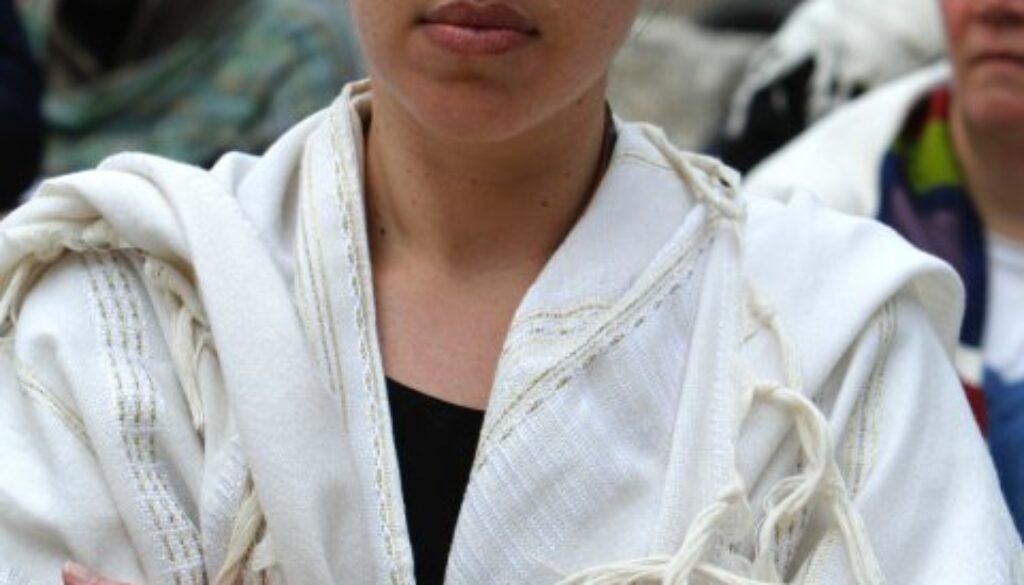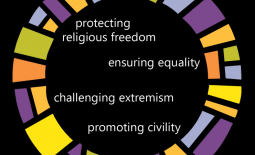The Power of Prayer
Friends, here’s a pop quiz: what’s the shortest prayer in the Torah?
Prayer features very heavily in the Torah but often in ways that feel far removed from our contemporary experience. Most prayer in the Torah takes place in the form of or accompanied by offerings. As we are approaching the end of the book of Exodus and the beginning of Leviticus, this ritualized form of worship will loom large in our Torah reading cycle.
It is easy to focus on the perception gaps between our understanding of prayer and that of our ancestors. Clearly, the cult of offerings has not been in place in almost two thousand years and even then, was already being displaced by the embryonic stirrings of rabbinic Judaism and the nascent liturgical traditions of synagogues. Understanding the internal world of ancient Israelites is also a question of anthropology as it is of theology: what does it mean, in a subsistence economy, to surrender that which is the choicest of your livelihood, deeply entwined in a cosmology of creation and humanity.
However, there is not just a perception gap between ancient Israelite prayer and rabbinic prayer; there is also a perception chasm between the experience of early rabbinic Judaism and today. If we would ask Jews, even those committed to synagogue attendance, what prayer is and does, one would get a range of questioning, complicated answers. We pray, but we often shy away from calling it that. We call it ‘davening’ or ’t’filah’, hiding the emotional import (and Christianized associations) of the word ‘prayer’ behind the veils of Yiddish and Hebrew.
There are many valid and compelling reasons to attend synagogue, whether it is for companionship, philosophical engagement, spiritual reflection, communal singing, cultural expression or because of that fine bottle of vintage Manischewitz that’s hiding in the back of the synagogue fridge. Still, a prayer life of personal praise, petition and thanksgiving (the structure we call ‘shevach’, ‘bakashah’ and ‘hoda’ah’, recognisable among others in the Amidah) may be harder for us to relate to. It is common and normal for Jews to struggle with prayer: both those who do show up to synagogue and are familiar with the breakneck speed of liturgy as well as those who do not show up to synagogue because the experience feels inaccessible or alienating. Jewish prayer can be a fairly opaque and niche experience. (I really do love synagogue prayer and I say this with a great deal of love.)
Still, the purpose of this sermon is not to provide an analysis of the contemporary experience of Jewish liturgy. (That would be better left to a study session!) The purpose of this sermon is to examine prayer, t’filah, in a deeply personal, transformative way. Grab your coffee, or perhaps something stronger, because I said ‘deeply personal, transformative.’
The word ’t’filah’ comes from the verb ‘lehit’palel’, which is a reflexive verb and can be translated as both ‘to judge oneself’ or ‘to be judged’. Either translation has profound implications for how we understand prayer, God and self. If we strip away liturgy, ritual and custom; what are we left with? The answer to this question is as complex as it is varied in our tradition; ranging from the Prophets to the Chassidim, from Yiddishist secularists to Process theologians. We are here to help make space for your own answers, on your own terms. And perhaps a brief insight into my answer can help you think about your own, whether that is in opposition or reaction to my answer.
So, let’s get deeply personal and transformative, if you will indulge me.
My prayer life is a discipline I have to consciously work at. Sometimes I fall off the prayer bandwagon and I scramble back up it, but that’s okay. Not only do I pray in synagogue with all of you (which is a wonderful experience) but I pray at home, alone, as well as I have done for many years. Some of you who have attended a weekday minyan at the synagogue know that I wear tefillin; a practice that anchors me in my regular prayer practice (and for which I, pre-rabbinical school, unfortunately have received significant gendered blowback).
The act of me enshrouding myself in my tallit, donning my tefillin and picking up my siddur is only part of the story. It is what happens between the lines, betwixt the structures of our tradition, that is significant. While I do not have an interventionist theology, I do have a personal theology. Like any theology, mine too waxes and wanes, morphs and evolves. What remains constant though is the comfort, edification, challenge and healing I find in private prayer.
I will readily admit that prayer has sustained me during this ongoing dark night of the pandemic. I pray and cry; vocalize frustration, anger, pain, grief. I sing out praise, gratitude and love. I find myself praying; ‘I bring You the offerings on the altar of my heart’, meaning that I bring the fullness of all of my emotions to the Holy One; the ugly emotions and the beautiful ones, because I trust that prayer can hold both.
Parashat Terumah sets the terms of the building of the Mishkan, the Tabernacle. In excruciating detail (think Ikea), we learn about the precious metals involved and the assemblage of the Tabernacle’s constituent parts. It is detailed and punctilious and dare I say, a little… boring to read at times. But the heart of the portion is found beating in the chest of these structures: ‘Asu li mikdash v’shachanti betocham’ – God says, ‘make for Me a sacred place so that I may dwell among you.’
Prayer is a gift to make sacred spaces in our lives, and hearts. It is the excavation of the human spirit, the place where the Ineffable meets the soul. We can, but do not need, to believe in a personal God in order to pray and value the discipline and effect of prayer. Prayer tempers our impulses, contextualizes emotion, grafts us into the collective human experience through – in our case – the particulars of Judaism.
It’s hard to admit the emotional core of prayer; I am enough of a Maskilah, (a product of the Jewish enlightenment) and Wissenschaft, (the empirical approach to the study of Judaism), to be a little reserved in the expression of such feelings. But our tradition teaches that the Holy One desires the heart, and tears emerge from the wellspring of a heart that sometimes feels broken. Because how can our hearts not feel broken at a time like this?
Prayer can be the circuit breaker between our brokenness and despair, between quick-temperedness and reactivity. When we feel provoked, be it by ourselves, our surroundings or the incessant and impatient news cycle, prayer teaches us to: stop. To slow down, take a deep breath, sit with our discomfort, process our own judgment, make sense of our own anger. Prayer can be a buffer between the bruising of human souls; a pause in a dangerously fast-paced age. Prayer is an alarm sounding for our shared humanity
Apart from all these, thankfully, prayer gives great joy. It reminds me how lucky I am, how happy I am—how good and beautiful my life is. Surrounded by love and security. To raise one’s palms to Heaven in thanksgiving is not only a great privilege, but it is a healthy counterpoint to the human condition. It reminds me that my life needs not just be struggle, but also, praise.
I pray with my children, holding their hearts in mine, wrapped under my tallit. (Noa prayed with me not long again, ‘dear God, can You help us deal with the stress of the pandemic?’). I pray to help myself become a better person; as a process of t’shuvah and growth. As a way to experience God’s love, or at least, to gaze upon myself through the eyes of a loving God—or the idea of a loving God.
Last but not least, prayer is protest. It is an act of resilience and defiance against the vagaries of the world; and an accounting of God. It is a pivot away from cruelty to love. Prayer is the great leveler; subversive and radical in its uncompromising ability to humanize and to give voice to the voiceless. As Rabbi Abraham Joshua Heschel wrote:
“Prayer is meaningless unless it is subversive, unless it seeks to overthrow and to ruin the pyramids of callousness, hatred, opportunism, falsehoods. The liturgical movement must become a revolutionary movement seeking to overthrow the forces that continue to destroy the promise, the hope, the vision.”
Going back to the question at the beginning of this sermon: the shortest prayer is Moses beseeching God to heal his sister Miriam: ‘Ana El na, refa na la.’ – ‘Please, God, now, heal her please.’ What could be more succinct, poignant, powerful and heartfelt than that very prayer?
Each of us gets to determine our own inner landscapes and no-one can determine it for us. Each of us wrestles, confronts, praises and loves in unique ways. What we share, however, is a great tradition that allows us, in the spirit of T’rumah, to bring the offerings of the heart and the gifts of healing . Whether you feel comfortable with the liturgy, find peace in meditation or encounter transcendence through a walk in the woods—prayer is our birthright to claim in the sacred places of our souls.




